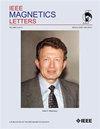航空磁场梯度张量测量的误差特性分析及误差源识别
IF 1.1
4区 物理与天体物理
Q4 ENGINEERING, ELECTRICAL & ELECTRONIC
引用次数: 0
摘要
航空磁梯度张量测量由于其抵抗地磁场随时间变化的能力以及提供丰富信息和高效的能力,已成为地质调查、矿产资源勘探和其他应用中的一种强大方法。各种因素可能会影响航磁梯度张量测量的质量,包括测量系统的系统误差、来自运载平台的磁干扰以及意外的环境影响。但目前还没有分析和识别它们的方法。因此,我们建立了一种基于变换偏差矩阵的误差源识别方法,该方法是根据张量分量之间的广义希尔伯特变换关系构建的,反映了测量的误差特性。我们的方法为指导数据处理提供了基础,并通过及时调整实验方案来减少财政、物质和人力资源的浪费。仿真和现场实验验证了该方法的正确性和工程实用性。本文章由计算机程序翻译,如有差异,请以英文原文为准。
Error Characteristic Analysis and Error Source Identification of Aeromagnetic Field Gradient Tensor Measurements
Aeromagnetic gradient tensor measurement has become a powerful method in geological surveys, mineral resource exploration, and other applications due to its ability to resist temporal changes of the geomagnetic field and its ability to provide rich information and be highly efficient. Various factors may affect the quality of aeromagnetic gradient tensor measurements, including systematic errors of the measurement system, magnetic interference from the carrying platform, and unexpected environmental impacts. But there are no methods for analyzing and identifying them at present. Therefore, we model an error source identification method based on a transforming deviation matrix, which is constructed according to the generalized Hilbert transform relations among the tensor components and reflects the error characteristics of the measurements. Our method provides a basis for guiding data processing and reducing waste of financial, material, and human resources through timely adjustments of experimental schemes. The correctness and engineering practicality of the method have been verified by simulation and field experiments.
求助全文
通过发布文献求助,成功后即可免费获取论文全文。
去求助
来源期刊

IEEE Magnetics Letters
PHYSICS, APPLIED-
CiteScore
2.40
自引率
0.00%
发文量
37
期刊介绍:
IEEE Magnetics Letters is a peer-reviewed, archival journal covering the physics and engineering of magnetism, magnetic materials, applied magnetics, design and application of magnetic devices, bio-magnetics, magneto-electronics, and spin electronics. IEEE Magnetics Letters publishes short, scholarly articles of substantial current interest.
IEEE Magnetics Letters is a hybrid Open Access (OA) journal. For a fee, authors have the option making their articles freely available to all, including non-subscribers. OA articles are identified as Open Access.
 求助内容:
求助内容: 应助结果提醒方式:
应助结果提醒方式:


